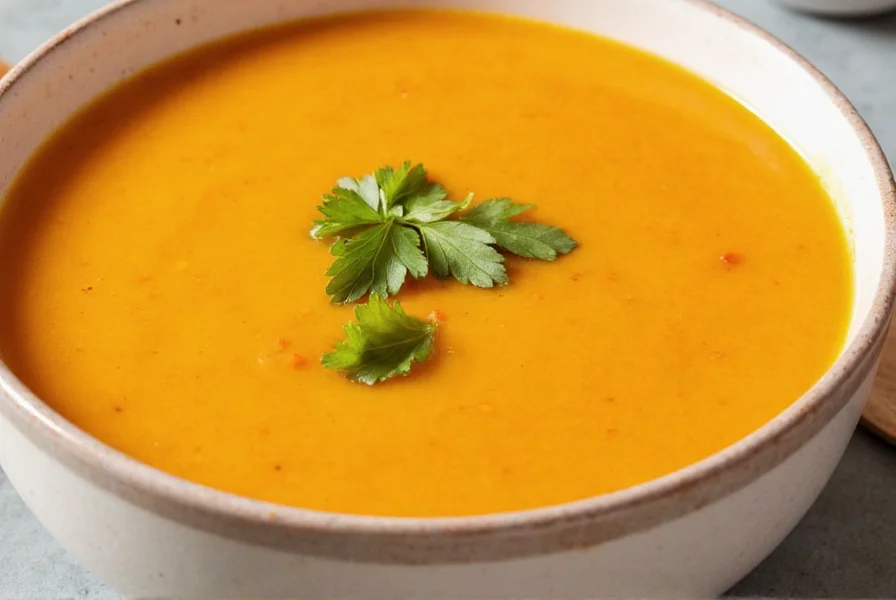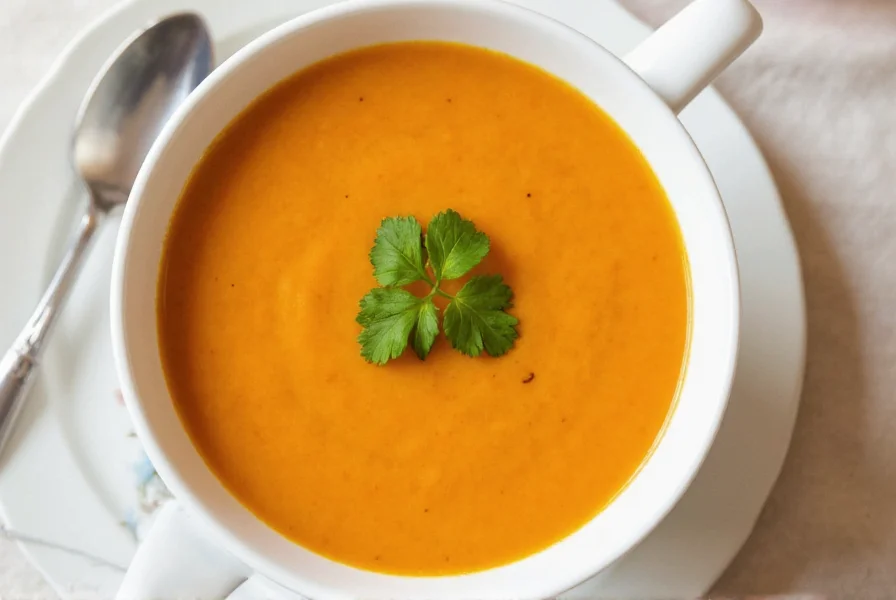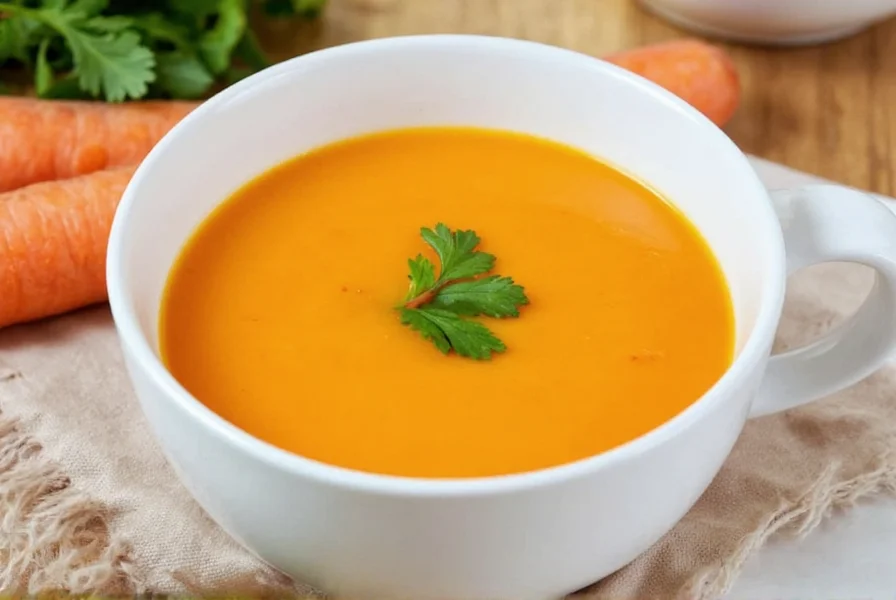Carrot and coriander soup represents one of the most harmonious flavor pairings in contemporary cooking. This easy carrot and coriander soup recipe has gained international popularity for good reason—it transforms humble ingredients into a restaurant-quality dish with minimal effort. The magic happens when the natural sweetness of carrots meets the bright, citrusy notes of fresh coriander, creating a flavor profile that's both comforting and refreshing.
The Culinary Science Behind This Perfect Pairing
Understanding why carrot and coriander work so well together requires examining their chemical composition. Carrots contain high levels of beta-carotene and natural sugars that develop deeper flavors when cooked, while coriander provides linalool and other volatile compounds that add complexity. When prepared using proper technique for carrot coriander soup, these elements combine to create a flavor experience greater than the sum of its parts.
Essential Ingredients for Authentic Flavor
The foundation of the best carrot and coriander soup starts with selecting quality ingredients:
| Ingredient | Why It Matters | Professional Tip |
|---|---|---|
| Organic carrots | Higher sugar content and cleaner flavor | Use tapered carrots for better texture |
| Fresh coriander (stems included) | Stems contain more flavor compounds than leaves | Chop stems fine for maximum flavor extraction |
| Yellow onion | Sweeter than white varieties, complements carrots | Cook until completely translucent, not browned |
| Vegetable stock | Provides depth without overpowering | Homemade yields best results for healthy carrot soup |

Step-by-Step Preparation Technique
Follow this professional method for perfect carrot coriander soup every time:
- Sweat, don't sauté: Cook onions and garlic in olive oil over medium-low heat until completely soft (8-10 minutes). This develops sweetness without browning.
- Add chopped coriander stems: Include both stems and leaves, but reserve some leaves for garnish. The stems contain concentrated flavor.
- Steam carrots: Add carrots and a small amount of stock, cover, and let steam for 5 minutes before adding remaining liquid. This preserves more nutrients.
- Simmer gently: Cook until carrots are fork-tender (15-20 minutes). Avoid boiling vigorously which can make carrots watery.
- Blend thoroughly: Use an immersion blender for smoothest texture. For restaurant-quality smoothness, pass through a fine-mesh sieve.
Avoiding Common Preparation Mistakes
Even experienced cooks make these errors when preparing traditional carrot and coriander soup:
- Using dried coriander instead of fresh: Dried coriander lacks the bright citrus notes essential to this soup's character. Fresh is non-negotiable for authentic flavor.
- Overcooking the soup: Extended cooking dulls the vibrant orange color and diminishes the fresh coriander flavor.
- Skipping the steaming step: Directly boiling carrots in stock leaches more nutrients and creates a less vibrant final product.
- Not seasoning properly: This soup requires more salt than you might expect to balance the natural sweetness of carrots.
Nutritional Benefits of Carrot Coriander Soup
This simple soup delivers impressive nutritional value. One serving (1 cup) typically contains:
- High levels of vitamin A (from beta-carotene in carrots)
- Significant vitamin K from fresh coriander
- Antioxidants that support immune function
- Only 120-150 calories per serving when prepared without cream
The combination creates a synergistic effect—vitamin C in coriander enhances the absorption of beta-carotene from carrots, making this healthy carrot soup particularly beneficial.
Delicious Variations for Different Dietary Needs
Adapt this versatile recipe to suit various preferences while maintaining the essential carrot coriander flavor profile:
- Vegan version: Use coconut milk instead of cream for richness while keeping it dairy-free
- Spicy variation: Add a small piece of ginger or pinch of cayenne for Caribbean-style carrot and coriander soup
- Protein boost: Stir in cooked lentils or white beans for a more substantial meal
- Low-sodium option: Use homemade vegetable broth and increase aromatic herbs for flavor without salt

Serving Suggestions for Maximum Enjoyment
Elevate your carrot coriander soup from simple to spectacular with these professional presentation tips:
- Drizzle with high-quality olive oil just before serving
- Add a dollop of plain yogurt or coconut cream for contrast
- Garnish with toasted cumin seeds for an aromatic finish
- Serve with crusty whole-grain bread for dipping
- Pair with a simple green salad dressed with lemon vinaigrette
Storage and Reheating Guidelines
Carrot and coriander soup maintains excellent quality when stored properly:
- Cool completely before storing to preserve vibrant color
- Refrigerate in airtight container for up to 4 days
- Freeze in portion-sized containers for up to 3 months
- Reheat gently over medium-low heat—never boil
- Add fresh coriander after reheating to refresh flavor
Frequently Asked Questions
Can I make carrot and coriander soup without stock?
Yes, you can create a flavorful carrot and coriander soup using water instead of stock, but you'll need to compensate with additional aromatics. Use the entire coriander plant (roots, stems, and leaves), add a small piece of kombu seaweed while cooking, and finish with a squeeze of lemon juice. The kombu adds umami depth that mimics stock without additional sodium.
Why does my carrot and coriander soup taste bitter?
Bitterness in carrot and coriander soup typically comes from overcooking the coriander or using old carrots. Coriander becomes bitter when cooked too long—add most of it near the end of cooking. Older carrots develop terpenes that taste bitter, especially near the core. Peel carrots thoroughly and remove the core section if bitterness occurs. A small pinch of sugar can balance mild bitterness without making the soup sweet.
What's the best way to achieve a smooth texture in carrot coriander soup?
For ultra-smooth carrot and coriander soup texture, follow these steps: 1) Cook carrots until completely tender, 2) Blend while still hot using an immersion blender, 3) Pass through a fine-mesh sieve, pressing with a ladle, 4) Return to low heat and adjust seasoning. The critical step is straining—this removes any fibrous carrot particles that immersion blending alone won't eliminate, creating that restaurant-quality smoothness essential to the best carrot coriander soup.
Can I use dried coriander instead of fresh in this soup?
While dried coriander (coriander seeds) can be used as a substitute, it creates a completely different flavor profile than fresh coriander (cilantro). Dried coriander seeds have warm, citrusy notes but lack the bright freshness of the leaves and stems. If using dried, toast 1-2 teaspoons of seeds, grind them, and add early in cooking. However, for authentic carrot and coriander soup, fresh coriander is essential—it's in the name for a reason. The fresh herb provides the distinctive flavor that defines this soup.











 浙公网安备
33010002000092号
浙公网安备
33010002000092号 浙B2-20120091-4
浙B2-20120091-4